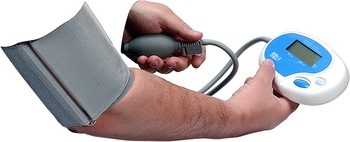Applying the updated 2014 blood pressure (BP) guideline to the U.S. population suggests that nearly 6 million adults are no longer classified as needing hypertension medication, and that an estimated 13.5 million adults would now be considered as having achieved goal blood pressure, primarily older adults, according to a JAMA study released online to coincide with the 2014 American College of Cardiology Scientific Sessions.

Ann Marie Navar-Boggan, M.D., Ph.D., of Duke University Medical Center, Durham, N.C., and colleagues quantified the proportion of adults potentially affected by the updated 2014 recommendations, compared to the previous guideline, issued nearly 10 years ago (Seventh Report of the Joint National Committee on Prevention, Detection, Evaluation, and Treatment of High Blood Pressure [JNC 7]). The researchers used data from the National Health and Nutrition Examination Survey (NHANES) between 2005 and 2010 (n = 16,372), and evaluated hypertension control and treatment recommendations for U.S. adults. The new guideline proposed less restrictive BP targets for adults 60 years of age or older and for those with diabetes and chronic kidney disease.
The authors estimate that the proportion of younger adults (18-59 years) in the U.S. considered to have treatment-eligible hypertension would be decreased from 20.3 percent under JNC 7 to 19.2 percent under the 2014 BP guideline and from 68.9 percent to 61.2 percent among older adults (≥ 60 years). Extrapolating these numbers to the population represented by this NHANES sample (U.S. adults in 2007) translates to a reduction in 5.8 million adults no longer classified as needing hypertension medication (70 million under JNC 7 to 64.2 million under the 2014 BP guideline).
The proportion of adults with treatment-eligible hypertension who met BP goals also increased slightly for younger adults, from 41.2 percent under JNC 7 to 47.5 percent under the 2014 BP guideline, and more substantially for older adults, from 40.0 percent to 65.8 percent.
The authors estimate that 13.5 million adults not previously considered to be meeting BP targets would be considered at goal BP under the new guideline, with the majority affected age 60 years and older, and many of whom have diabetes, chronic kidney disease, and cardiovascular disease.
Overall, 1.6 percent of U.S. adults 18-59 years of age and 27.6 percent of adults age 60 years or older were receiving BP-lowering medication and meeting more stringent JNC 7 targets. These patients may be eligible for less stringent or no BP therapy with the 2014 BP guideline.
"Public health messaging should target the large number of adults in the United States with changing recommendations under new guideline to ensure that new recommendations do not result in unintended consequences in adults now with 'relabeled' BP status," the authors write. "Further research is needed to determine how this new guideline affects overall BP levels attained and to determine the related effects on cardiovascular disease outcomes."
Harlan M. Krumholz, M.D., S.M., of the Yale University School of Medicine, New Haven, Conn., writes in an accompanying editorial that these new guidelines, with their innovations and controversy, have established a new course.
"Navigating it may be uncomfortable and will perhaps force clinicians to grapple with issues that have been ignored for too long. While it is important to advocate for health and promote healthy environments and behaviors on the broader scale, for medical decision making, it is even more important to ensure informed choice with the full participation of the person who will incur the risks and benefits of the decision. When viewed through this lens, the controversies about the guidelines become less contentious and the focus shifts to refining the evidence and producing better ways to communicate what is known for decision-making purposes. By directing attention to that message, already firmly embedded in these guidelines with their bold recommendations and deference to patient preference, they may have accomplished more than they ever envisioned."